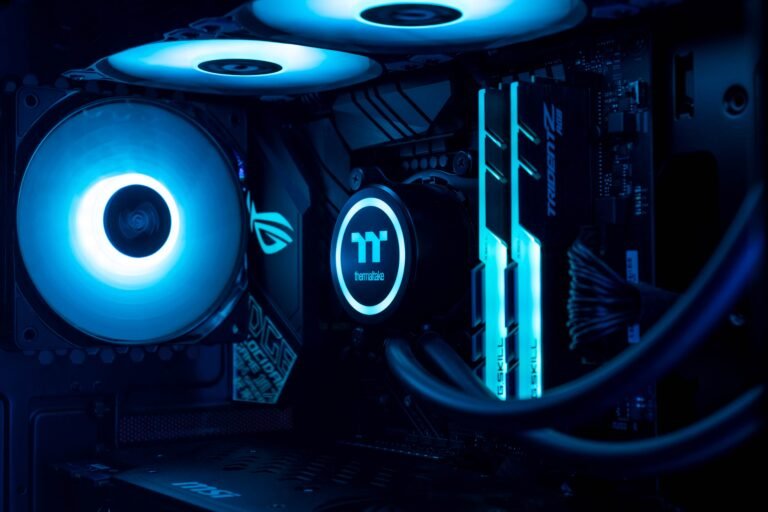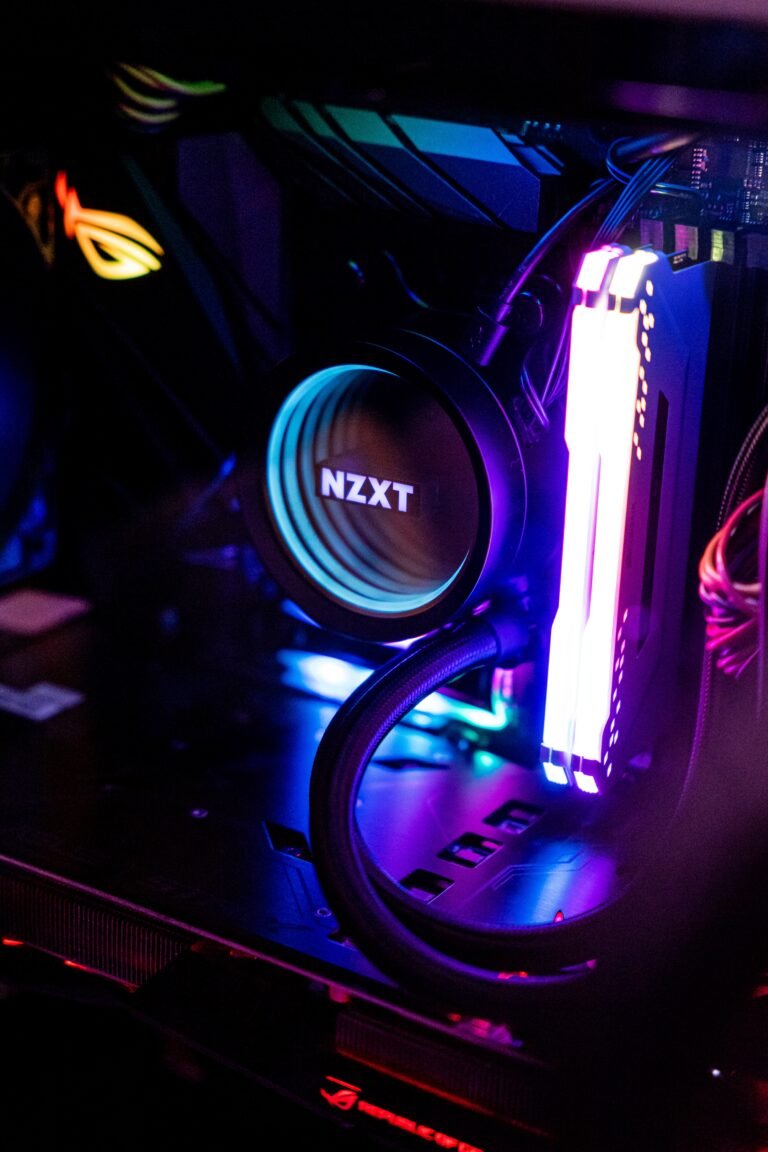Graphics Card Guide: How to Choose the right GPU
The importance of choosing the right graphics card cannot be overstated. Whether you’re a dedicated gamer striving for higher frame rates and excellent visuals or a creative professional demanding impeccable rendering performance, your GPU plays a pivotal role in achieving those goals.
Tons of advice on the internet regarding how to Choose the right GPU.
Choosing the best GPU today is so important for gaming, content creation, or work. Start by identifying your primary use.
Understanding the following terms is so important:
- The clock speed.
- VRAM.
- Cores.
- Compatibility.
- Reviews.
- Benchmark.
Why do graphics cards matter?
Your graphics card is crucial, whether you’re a gamer or a professional. For gamers, it’s the key to smooth and immersive gameplay, handling high frame rates and top-quality visuals. A powerful card lets you enjoy the latest games at their best. On the other hand, a weak one results in choppy gameplay and lower graphics quality.
Professionals using applications like video editing and 3D modeling also need a strong graphics card. It reduces rendering times and boosts performance significantly. In the market, NVIDIA and AMD offer various models to fit different needs and budgets. Recent innovations like NVIDIA’s ray tracing technology bring lifelike graphics to your screen.
In summary, investing in the right graphics card is essential for top-notch gaming and professional work. It’s the key to unlocking the full potential of your PC.
Why GPU is essential for gaming?
A high-quality graphics card is essential for top-notch gaming. It ensures smooth gameplay with fast frame rates and stunning visuals. A robust graphics card lets you fully enjoy the latest games at their best, while a weaker one results in choppy gameplay and lower graphics quality.
In summary, a good GPU is vital for an exceptional gaming experience.
Why GPU is essential for professionals?
In the professional world, a high-quality graphics card is your ally. Whether you’re into video editing, 3D modeling, graphic design, or any visual-intensive field.
it will boost system performance, reducing rendering times and speeding up complex calculations. This results in more efficient workflows, allowing you to complete tasks faster.
For tasks like color correction, visual effects, and fine detailing, your GPU will ensure accuracy and clarity in displaying high-resolution content.
Enabling multiple video outputs allows for the integration of multiple displays, enhancing multitasking and productivity.
In fields like architecture and engineering, powerful graphics cards make real-time 3D modeling and CAD work seamless.
Also, Professionals in gaming, architecture, and product design rely on graphics cards for real-time simulations and visualizations.
In our Graphics Card Guide, we’ll explore how to select the ideal GPU for your professional needs.
Which is better Nvidia or AMD?
In the world of graphics cards, two giants dominate the market: AMD and Nvidia. Both offer various models for different budgets and purposes. Nvidia excels in gaming with features like Ray Tracing and DLSS, while AMD is cost-effective and powerful for professional tasks.
In a bold move, Intel, renowned for its CPUs, has now stepped onto the graphics card. This significant development not only diversifies the field but also promises fresh innovations and options for consumers. Intel’s foray into graphics cards marks an intriguing chapter in the ever-evolving world of computer hardware.
For gamers, Nvidia is the top choice. It’s known for exceptional performance and advanced gaming techs like Ray Tracing and DLSS.
Ray Tracing creates lifelike visuals with real-time light simulation, while DLSS boosts performance without compromising quality.
Nvidia’s strong driver support and software optimization add to its appeal, ensuring seamless gaming experiences.
AMD provides a budget-friendly alternative with strong performance for professional tasks like video editing and 3D rendering.
Choose based on your priorities. Nvidia for gaming, AMD for cost-effective power in professional tasks.
Learn about GPU specifications
These specs are the foundation of vibrant graphics.
In this exploration, we’ll break down GPU specifications. Whether you’re a tech enthusiast, gamer, or professional, this dive into GPU specs will provide valuable insights.
The clock speed
The clock speed of a GPU, often referred to as the core clock, is a fundamental metric that significantly impacts a graphics card’s performance. It measures the speed at which the GPU’s cores process instructions and render images. This is how Clock speed helps:
- GPU clock speed directly impacts processing power.
- Higher clock speeds result in smoother gaming frame rates.
- Overclocking potential can boost GPU performance.
- Some software benefits from faster GPU clock speeds for tasks like rendering.
- Dynamic clocking improves energy efficiency by adjusting to workload.
- A balanced GPU configuration should consider clock speed along with other specs.
VRAM
The VRAM plays a high role in determining a graphics card’s performance and suitability for various tasks. Here are 8 things about VRAM is:
- VRAM stores textures and frame data, impacting image quality and performance.
- High resolutions, like 4K, demand more VRAM for smooth operation.
- Multi-monitor setups and tasks like video editing benefit from ample VRAM.
- VRAM quality directly affects texture detail and visual immersion.
- Adequate VRAM future-proofs your system for upcoming software demands.
- Sufficient VRAM reduces texture streaming, providing smoother experiences.
- Professional tasks like video editing and 3D rendering require substantial VRAM.
- Some games specify minimum VRAM requirements for compatibility.
Graphics card Cores
Graphics card cores, such as CUDA cores in Nvidia GPUs and Stream Processors in AMD GPUs, are fundamental components that significantly impact a graphics card’s performance and capabilities.
- Cores enable parallel processing for complex tasks.
- More cores result in better gaming performance.
- Cores accelerate professional applications like video editing and 3D modeling.
- Specialized cores like RT Cores and Tensor Cores enhance ray tracing and AI capabilities.
- Cores are designed for efficiency and power consumption.
- Scalability allows for a range of GPU options to match different needs.
Compatibility of the graphics card with other components
Ensuring your graphics card works with your system will matter the most for these reasons:
- Graphics card must match your motherboard interface (typically PCIe).
- Confirm that your power supply can meet the GPU’s power requirements.
- Check if your PC case has enough space for the chosen GPU.
- Ensure graphics card drivers are compatible with your OS.
- Match GPU outputs with your monitor’s inputs for connectivity.
- Meet or exceed software’s specified hardware requirements.
- Ensure sufficient cooling in your PC case for high-performance GPUs.
- Regularly update GPU drivers and BIOS for compatibility, performance, and security.
How GPU reviews are so important for an upgrade
Reviews are an indispensable resource when considering the purchase of a new GPU. They provide in-depth analysis, real-world testing, and user feedback that collectively equip you with the knowledge needed to make an informed decision.
- Reviews provide real-world performance data.
- They offer hands-on testing and evaluation.
- Reviews analyze GPU features and their impact.
- Compatibility with various hardware is assessed.
- Temperature and noise levels are discussed.
- Reviews weigh value for money.
- Build quality and reliability are considered.
- User feedback and experiences are shared.
- Future-proofing potential is evaluated.
What is GPU benchmark?
GPU benchmark tools like GPUScore allow you to compare GPU speed, performance, and efficiency across devices. These tools test GPUs by running workloads similar to what consumers use, like gaming content or rendering programs.



